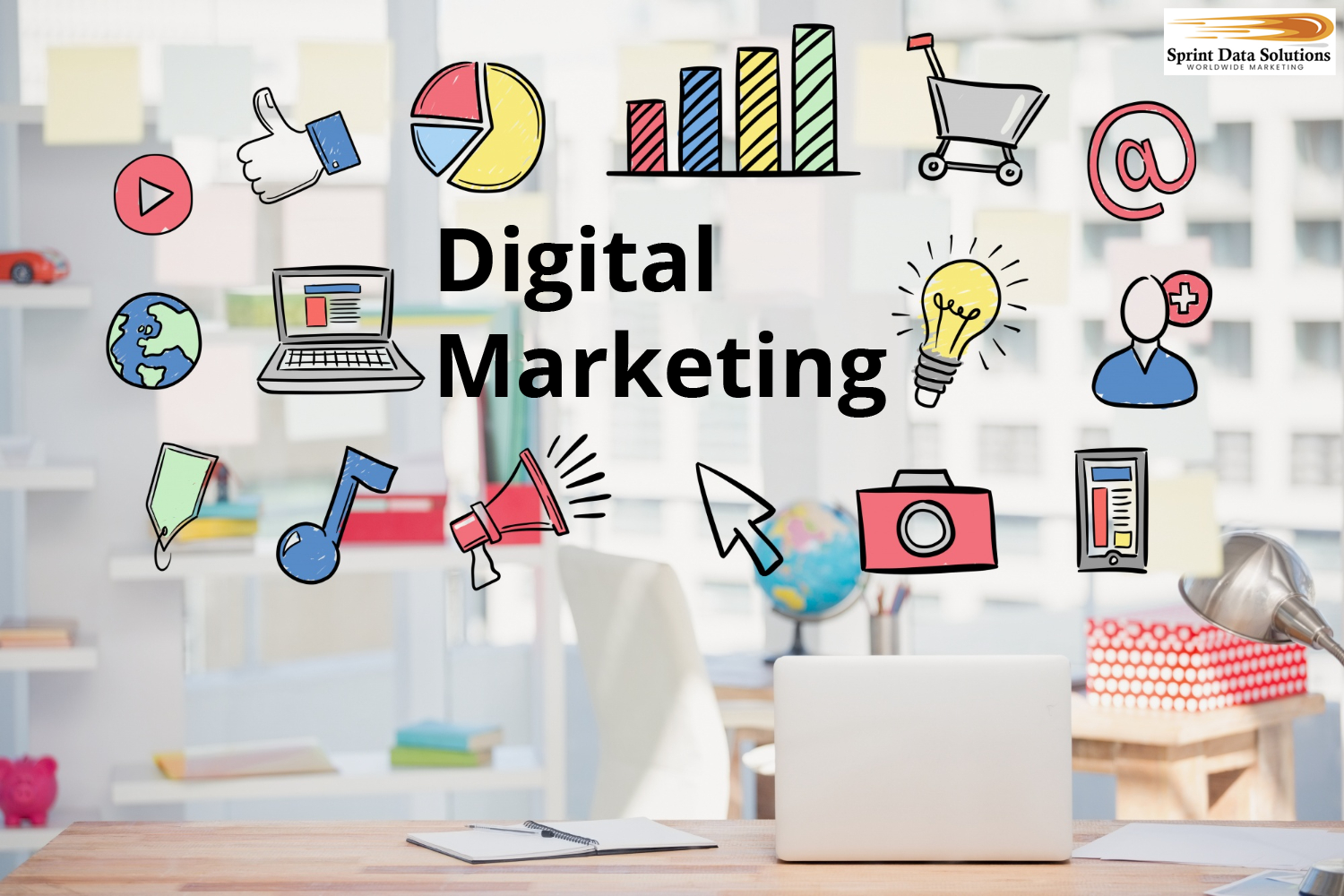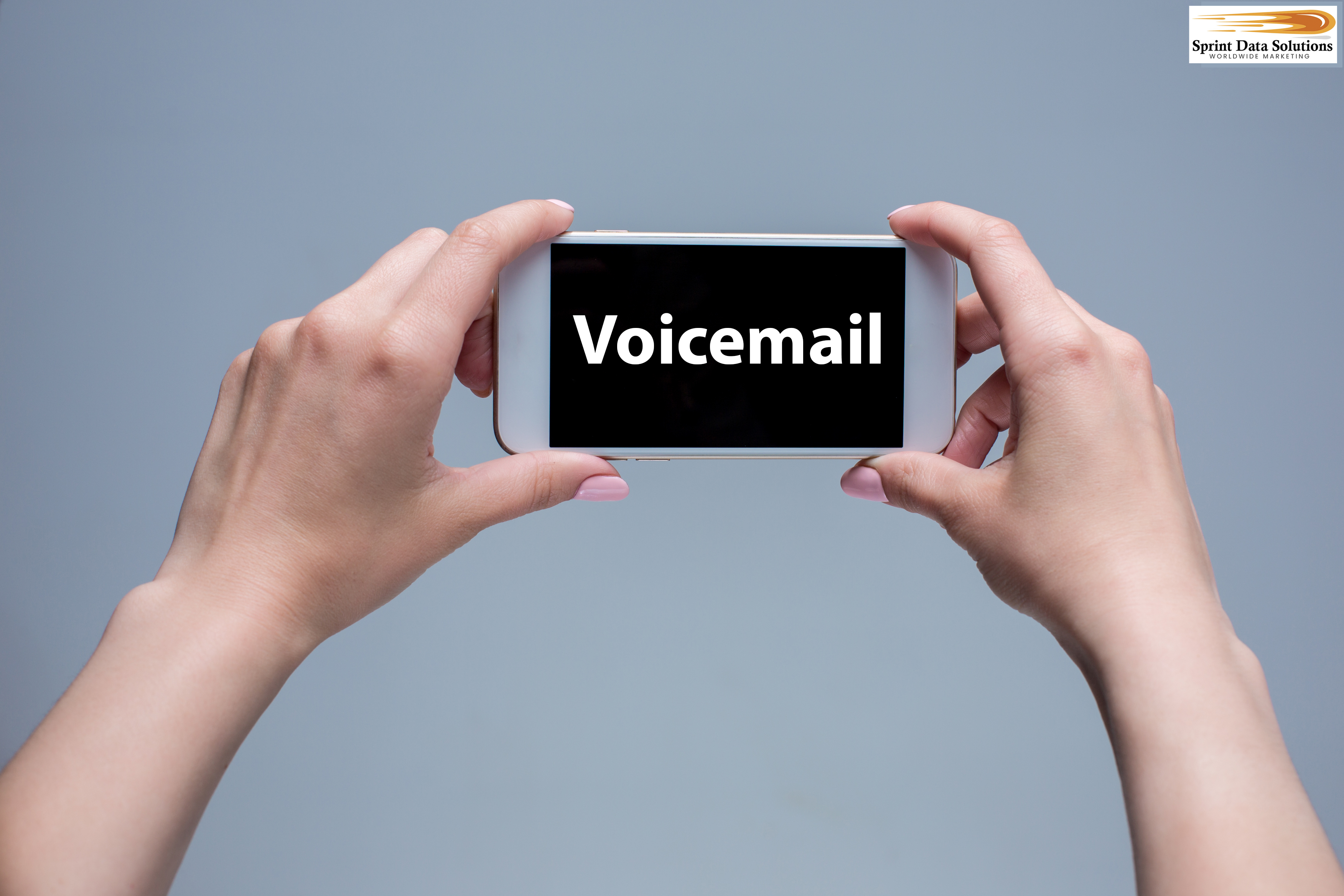Digital Marketing Is The Next Channel For The 21st Century
The evolution of marketing over the centuries has been deeply intertwined with the development and expansion of various media channels. In the 19th century, the printing press was the central tool for marketing, and businesses relied heavily on print media like newspapers, magazines, and flyers. This was the first widespread opportunity for businesses to communicate with a mass audience. As a result, print media became a primary avenue for businesses to advertise their products and services, offering consumers detailed descriptions and visual depictions.
The 20th century marked a turning point in marketing history. The advent of radio and television opened up entirely new ways to engage consumers. Radio allowed brands to reach consumers through auditory messages, while television introduced the ability to demonstrate products through visuals, moving images, and sound. This shift significantly changed how advertising campaigns were crafted, allowing companies to connect with audiences not only through words and images but also through sound, emotions, and storytelling. The use of these mass media channels grew to dominate the marketing world, reshaping how businesses communicated their value proposition to the masses.
In the 21st century, digital technologies have brought a transformative shift to the marketing landscape. The introduction of the internet, followed by social media platforms, mobile devices, and data analytics, has revolutionized marketing by creating an environment where precision and personalization are paramount. Today, businesses can leverage vast amounts of consumer data to understand their audience at a granular level—everything from demographics to purchasing behavior to interests. Digital marketing allows for highly targeted campaigns that reach consumers with greater specificity, ensuring that the right message is delivered to the right person at the right time.
Furthermore, the integration of artificial intelligence, machine learning, and automation into marketing strategies has led to highly refined processes, making marketing not only more efficient but also more effective. Unlike traditional media, which was often a one-size-fits-all approach, digital marketing empowers businesses to craft individualized experiences, offering products and services to consumers in a way that feels relevant and timely.
For many businesses, this shift to more personalized, data-driven marketing has proven to be one of the most effective ways to boost engagement and conversion rates. With the ability to segment audiences and create tailored experiences, companies can achieve higher levels of interest and response even from a smaller pool of targeted customers. Sprint Data Solutions Worldwide Marketing is uniquely positioned to assist businesses in navigating this digital marketing landscape, offering customized data solutions that help businesses connect with their ideal audience and optimize their marketing efforts with precision.

What Sprint Data Solutions Worldwide Marketing Is
Sprint Data Solutions Worldwide Marketing was founded by a disabled veteran with a strong desire to contribute to the nation’s economic growth following military service. As a visionary entrepreneur, he recognized the untapped potential of marketing in the rapidly evolving digital landscape and set out to build a business that would capitalize on this shift. Starting with traditional marketing methods, including direct mail, the company quickly built a reputation for providing high-quality, results-driven services. At a time when television and radio advertising were still the dominant methods of reaching consumers, few predicted the imminent shift toward digital marketing.
As digital marketing began to gain traction, there was a clear gap in the market for businesses that understood how to merge traditional data practices with new, innovative technologies. Sprint Data Solutions Worldwide Marketing, with its deep understanding of data acquisition, management, and analytics, was perfectly positioned to fill that gap. The company made the strategic decision to integrate digital marketing into its offerings, giving it an early mover advantage. This foresight allowed the company to build a robust infrastructure that supported both traditional and digital marketing efforts, helping its clients navigate the new world of online engagement.
Through this transition, Sprint Data Solutions Worldwide Marketing became a pioneer in data-driven marketing strategies, utilizing its extensive expertise to create targeted and highly effective campaigns. By combining sophisticated data management systems with digital platforms like email, text messaging, and targeted web marketing, the company achieved impressive results for its clients. The integration of digital services allowed the company to tap into a rapidly growing market, one that demanded more personalized, data-driven marketing solutions. This transition positioned Sprint Data Solutions Worldwide Marketing as a leader in the marketing industry, enabling it to adapt, thrive, and ultimately shape the future of data-driven marketing practices for years to come.
The Digital Marketing Difference
Digital marketing represents a transformative evolution in the world of promotion, offering a level of precision, tracking, and adaptability that traditional marketing methods simply cannot match. One of the most significant advantages digital marketing offers over older forms of media—such as television or print advertising—is its ability to provide real-time, granular data. In traditional media, such as TV commercials, marketers are limited to broad estimates of reach and impact. While a television ad might air to millions of viewers, determining how many of them actually saw the ad—or, more crucially, how many were influenced to take action—has long been a matter of guesswork. Marketers have relied on broad statistical models or post-campaign surveys to extrapolate effectiveness, often without a clear understanding of direct cause and effect. These methods can only approximate the number of people who viewed the ad, leaving much of the return on investment (ROI) to be inferred, rather than accurately tracked.
Digital marketing, by contrast, is rooted in data. Unlike traditional media, every digital interaction is traceable. Whether it’s a click on a banner ad, an email open, or a purchase made on an e-commerce site, every aspect of the consumer’s journey can be monitored. This ability to track data has revolutionized how businesses engage with potential customers. At the most basic level, one of the defining characteristics of digital marketing is the certainty with which it can track consumer interactions. For example, consider the difference between direct mail and email marketing. Direct mail, being a physical product, is vulnerable to issues such as misdelivery, lost items, or non-delivery altogether. As a result, marketers can’t be certain that their message reached the intended recipient, let alone whether it influenced the recipient to take action. In contrast, email marketing provides clear data on delivery. Marketers know instantly whether an email has been successfully delivered, opened, or clicked. This immediate feedback allows businesses to respond and adjust their strategies in real-time, unlike with traditional media.
Email marketing also takes this a step further by offering the ability to directly link email campaigns to measurable business outcomes. For instance, an email campaign might feature a promotion with a unique, trackable link or a coupon code that leads to a sale. This means businesses can identify not just that a sale occurred, but also the exact email, recipient, and even their geographic location. This level of detail allows businesses to analyze customer behavior and preferences in ways that were previously impossible, providing deep insights into what types of offers are most effective, the best times to reach different segments of the market, and even which channels are performing best. This data can then be used to fine-tune future campaigns, ensuring that marketing dollars are spent more efficiently and effectively.
Furthermore, digital marketing encompasses a wide range of tools—like retargeting ads, social media campaigns, search engine optimization (SEO), and online content—that allow businesses to continuously track and engage with their audience throughout the buyer’s journey. The data gathered from these tools can be used not only for tracking conversions but for nurturing leads, improving customer relationships, and personalizing future communications. Digital marketing makes it possible to create a dynamic, personalized experience for each consumer based on their behavior, interests, and previous interactions with a brand.
This ability to track, measure, and adjust campaigns based on real-time data is a major reason why digital marketing is now seen as an essential tool for businesses of all sizes. It offers precision, accountability, and the kind of insight that traditional media simply can’t provide. Whether it’s through email, social media, or web analytics, the opportunities for businesses to understand and connect with their audience are greater than ever before. The power of data-driven decision-making is at the core of digital marketing’s value, enabling businesses to continually refine their strategies and maximize their marketing investments.
Multi-Media
Digital marketing stands out from traditional marketing by offering unparalleled flexibility and versatility, as it transcends the limitations inherent in traditional media. Unlike print, which is confined to static images and text, digital marketing can seamlessly integrate a wide array of media forms, including text, audio, video, and interactive elements. While radio can engage listeners with sound, it lacks the visual capabilities that digital marketing offers through rich multimedia content. Similarly, television or video lacks the immediate interactivity of telemarketing, where direct conversations take place. Digital marketing, however, eliminates these boundaries, enabling brands to utilize a combination of all traditional media formats—text, images, video, and audio—in a single campaign.
Email marketing, for example, is no longer limited to just a written message. It can now include high-quality images, videos, interactive links, and even personalized features like dynamic content that adapts based on the recipient’s behavior or preferences. Embedded links allow marketers to direct users to external websites, provide access to exclusive content, and encourage deeper engagement. Furthermore, digital marketing allows for the integration of direct communication features like chatbots or live customer service interactions, allowing businesses to respond to consumer queries in real-time or on-demand.
In addition to email, digital marketing also spans other platforms and devices. Smartphones, for instance, open up new opportunities for mobile marketing, including text messaging (SMS), app-based promotions, and social media interactions. These tools allow for instant access to users, delivering personalized offers and messages at the moment they are most relevant, such as when a customer is near a store or when they are browsing a particular product online. Digital marketing also reaches beyond devices like computers and smartphones, expanding into wearable tech, voice assistants, and even digital signage, ensuring that brands can engage their audience across a range of touchpoints. This flexibility makes digital marketing a powerful and dynamic tool in today’s fast-paced, tech-savvy world. Some of the format possibilities for digital marketing include:
Email Marketing
Email marketing has evolved into one of the most effective and adaptable forms of communication, offering businesses unparalleled opportunities to engage with their audience in real-time. Unlike traditional direct mail, which requires recipients to be physically present at their mailboxes, email marketing allows businesses to reach customers wherever they are—whether at home, on the go, or even at work—through a desktop, laptop, or smartphone. This accessibility is a key advantage, as it ensures that your message is always within reach of the recipient, enabling timely communication and increasing the likelihood of engagement.
What makes email marketing particularly valuable is its versatility in design. Emails can range from simple, text-based messages that offer quick, concise information to complex, visually rich formats that incorporate dynamic graphics, photos, illustrations, and even interactive features like embedded videos, polls, or clickable product carousels. The level of sophistication can be tailored to suit the target audience, the message being communicated, and the brand’s identity, all while maintaining a professional and compelling presentation.
In addition to its visual appeal, email marketing provides a wealth of actionable data, making it an incredibly valuable tool for businesses seeking to understand their customers’ behaviors. With the ability to include trackable links, businesses can monitor recipient activity, such as clicks, opens, and engagement with special offers. This data can then be leveraged to further refine and personalize future communications, driving higher conversion rates and improving customer retention. Moreover, the automation capabilities of email marketing are particularly powerful. Businesses can set up automated workflows that trigger emails based on specific customer actions or behaviors. For instance, when a customer makes a purchase or subscribes to a newsletter, they can receive a personalized welcome email or even a series of onboarding messages. Likewise, businesses can send automated alerts for sales, new product launches, or restocked items—ensuring that customers are always informed and motivated to make a purchase.
Furthermore, email marketing allows businesses to effectively nurture relationships with existing customers. Automation can be used to send reminders for repeat purchases, notifications of upcoming sales, or even birthday greetings with special offers. Abandoned cart emails are another highly effective automated feature, reminding customers who have left items in their cart to complete their purchase, often with an added incentive, such as a discount or free shipping. This approach not only recaptures lost sales but also builds a stronger, more personalized connection with the customer. Ultimately, email marketing combines creativity, data insights, and automation to deliver tailored, timely messages that drive both customer satisfaction and business growth.
Voice Broadcasting
Voice broadcasting, once primarily associated with traditional telemarketing and radio ads, has evolved significantly with the advancement of digital marketing. While its origins are in audio-based communication, the flexibility of modern digital tools allows voice broadcasting to be integrated seamlessly across various platforms, enhancing marketing efforts in creative ways.
Today, voice broadcasting isn’t just about phone calls or radio spots; it can be embedded directly into emails, used as voicemail messages, or incorporated into digital ads across social media, websites, and mobile apps. This versatile approach allows businesses to use voice as a powerful tool for engaging audiences in a more personal and memorable way. By including elements like tone, emotion, and customized audio effects, voice broadcasting can build deeper connections with customers, creating a more authentic and human-centered experience.
For businesses where conveying emotion, urgency, or tone is crucial—such as in the case of local services, non-profits, or urgent promotions—voice broadcasting offers a distinct advantage. Unlike text or images, the human voice is uniquely capable of evoking feelings, conveying trustworthiness, and emphasizing key messages in ways that digital text often cannot. As a result, when used effectively, voice broadcasting can become a vital part of a comprehensive marketing strategy that blends traditional methods with modern digital innovation.
Text/SMS
A relatively recent development in digital marketing is the rise of SMS (Short Message Service), also referred to as text messaging in many regions. SMS traces its origins back to an era when mobile phones were more basic, lacking the capacity to handle large file formats or more advanced communication features like email. In those early days, SMS was designed for sending brief text messages, often limited to just a few hundred characters, making it an efficient, lightweight solution for communication.
However, the true potential of SMS has evolved as smartphones became more sophisticated, offering a seamless integration of text messaging with various applications, allowing businesses to engage with consumers in real-time. SMS marketing has grown significantly due to its ability to deliver short, direct, and highly actionable messages straight to a consumer’s phone, a device they keep within arm’s reach most of the day. This immediacy and personal access mean that text messages are often read faster and with more regularity than email or even physical mail, making it an increasingly valuable tool for businesses looking to engage with customers in a timely, direct manner.
Furthermore, SMS messaging is an incredibly versatile marketing tool. Brands can leverage it for a variety of purposes, including promotional offers, customer support, reminders, and notifications. When used effectively, SMS marketing can offer a high return on investment, boasting higher engagement rates than email campaigns. Moreover, the brevity of SMS messages encourages concise, attention-grabbing content, allowing businesses to communicate their message clearly and quickly. As mobile usage continues to rise, SMS marketing will undoubtedly remain a core strategy for businesses looking to capture and hold the attention of their target audience.

How We Can Help
Sprint Data Solutions Worldwide Marketing has dedicated years to building an extensive and continually evolving database of contact information, capturing the most current and relevant data available. Through meticulous data collection processes, we ensure that every contact is obtained through ethical and legal means, using methods such as opt-in programs, account registrations, survey responses, and voluntary sharing of business card details. By adhering to these best practices, we uphold a commitment to transparency and privacy, ensuring that every piece of information is gathered responsibly.
In addition to our primary efforts, we maintain strategic partnerships with some of the most reputable data providers in the industry. These alliances enable us to extend our reach and expand the variety of contact profiles we can offer to our clients. Our goal is to ensure that businesses have access to highly-targeted and diverse leads to enhance their marketing efforts.
What truly sets our data apart is our unwavering focus on maintaining the accuracy and relevancy of our databases. Unlike static, one-time compilations, our contact lists are considered “living documents.” We recognize that markets and demographics are dynamic, and we make it a priority to regularly revisit, update, and refine our databases. This ongoing process includes verifying changes such as address updates, relocations, and even life events, such as the passing of a contact. By keeping the data current, we help our clients avoid wasting marketing resources on outdated or irrelevant information, ensuring that every communication they send is targeting the right audience. With periodic reviews and updates, Sprint Data Solutions Worldwide Marketing guarantees that the information you receive is always fresh, accurate, and poised to deliver the maximum return on investment.
While utilizing a large database can offer valuable insights, it does not automatically ensure sales success. Sprint Data Solutions Worldwide Marketing has invested in advanced artificial intelligence systems to enhance the effectiveness of their data analytics. These systems incorporate machine learning algorithms that carefully sift through vast amounts of data to organize and prioritize contacts based on relevance. Rather than receiving a random selection of names, addresses, and basic demographics, clients are presented with carefully curated data that aligns with their marketing goals. The data is filtered based on specific client requirements and performance metrics, which increases the chances of engagement, interest, and ultimately, a positive response.
A critical factor in this process is the ability to customize data according to geographic specifications. Whether the goal is to reach a nationwide audience or target a more specific region, Sprint Data Solutions can accommodate it. For broader campaigns, nationwide coverage is available, allowing businesses to reach consumers across the entire country. For more focused marketing strategies, clients can zoom in on particular areas, such as targeting the New England region or narrowing the scope to a specific state, like Massachusetts. The capability to further refine marketing efforts down to the city or even the neighborhood level—such as focusing exclusively on residents of Beacon Hill in Boston—provides businesses with unmatched precision in their outreach efforts.
Beyond location-based targeting, the power of data analytics also extends to refining customer characteristics. By leveraging advanced filtering techniques, Sprint Data Solutions Worldwide Marketing enables clients to prioritize contacts based on specific traits and preferences. For instance, businesses can target ethnic groups like African-Americans or religious communities such as Jewish Americans, ensuring that their campaigns resonate with those more likely to engage. Additionally, the database allows for economic segmentation, making it easier to reach high-net-worth individuals if that aligns with the client’s offerings. Furthermore, health conditions like diabetes can also be used as a criterion, helping businesses identify individuals who are more likely to benefit from health-related products or services. This ability to segment and prioritize based on detailed metrics ensures that marketing efforts are not only more targeted but more effective in driving positive outcomes.
An Array Of Services
Sprint Data Solutions Worldwide Marketing leverages its extensive and meticulously curated databases to offer a wide range of specialized digital marketing services that are tailored to meet the unique needs of each client. Their team of experts utilizes cutting-edge tools and data analytics to ensure highly targeted marketing efforts. These services include email marketing, where personalized content is sent to potential customers based on demographic and behavioral insights. They also offer SMS/text message marketing, which allows businesses to engage with customers directly on their mobile devices, providing a more immediate and personal touch.
Additionally, Sprint Data Solutions Worldwide Marketing supports social media advertising campaigns by utilizing data-driven targeting to ensure the right audience is reached with relevant messages, enhancing engagement and conversion rates. With their advanced geo-targeting capabilities, they enable businesses to focus their efforts on specific geographic regions, from national campaigns down to neighborhood-level targeting. The company’s expertise also extends to paid search advertising, where strategic keyword targeting and competitive analysis drive traffic to business websites, ensuring maximum ROI. Through these and other digital marketing services, Sprint Data Solutions Worldwide Marketing ensures that businesses are able to effectively connect with their audience, drive conversions, and maximize their marketing impact.
Email Broadcasts
Email marketing, specifically through targeted email broadcasts, remains one of the most fundamental and effective digital marketing strategies. When executed properly, it serves to not only promote products or services but also to increase awareness of special sales, events, or promotions. The key to success lies in personalization and segmentation—ensuring the email content resonates with the specific needs and preferences of the target audience. By carefully curating lists and using data analytics, businesses can significantly improve the relevance of their messages. Subscribers who are genuinely interested in the offerings are more likely to engage with the content, often excluding these targeted messages from their spam filters. This leads to higher open rates, better response rates, and ultimately, more conversions. Email broadcasts, when aligned with user interests and optimized for each audience segment, continue to deliver substantial marketing results and foster stronger customer relationships.
Email Newsletter Broadcasting
Email newsletters are an invaluable marketing tool for businesses seeking to build deeper, more meaningful relationships with their audience. Unlike time-sensitive promotions or transactional communications, newsletters are typically expected to offer more substantial, valuable content that educates, informs, and engages recipients over time. While it’s certainly possible to market products and services in newsletters, the most effective campaigns often go beyond simple advertisements to offer added value in the form of rich, well-rounded content.
For instance, a business selling automobile repair accessories might use their newsletter to showcase new products or offer discounts. However, to make the newsletter more engaging and informative, they could include expert tips on car maintenance, guides on achieving superior detailing results, or DIY repair tricks that resonate with their audience’s needs and interests. This type of content builds trust and positions the business as a helpful resource, not just a seller of products.
Wellness-oriented businesses, similarly, can expand beyond promoting their products, such as stress reduction tools or natural supplements, by enriching their newsletters with articles on lifestyle topics like mindfulness, meditation techniques, or nutrition tips. Offering access to exclusive events, such as webinars with health experts or live Q&A sessions, can further engage subscribers, deepening their connection to the brand. These newsletters don’t just serve to sell a product—they serve to cultivate an ongoing relationship, offering recipients useful information that can improve their lives.
In this way, newsletters serve as a powerful platform for thought leadership. Rather than being purely transactional, they provide an opportunity to educate consumers, build brand loyalty, and create a community around shared values and interests. By offering relevant content alongside products or services, businesses can create a holistic marketing approach that goes beyond selling and into the realm of ongoing consumer education and relationship-building.
SMS Text Messaging Campaigns
As smartphone usage continues to rise, many people now spend more time on their phones than on their computers, largely due to the portability and convenience of mobile devices. This shift has made SMS/Text messaging one of the most effective communication channels for reaching consumers. Unlike physical mail, which may take days to arrive and often gets overlooked, or email, which can be filtered into spam folders or ignored, SMS messages are delivered directly to users’ phones and are typically read within minutes of receipt.
However, SMS/Text marketing requires careful planning due to its inherent limitations, such as the character count restrictions. Marketers need to craft concise, engaging, and impactful messages that grab attention quickly and deliver the key message within just a few lines. While this may seem challenging, when executed well, SMS/Text messaging becomes a powerful tool for businesses to engage customers. This format avoids many of the common barriers associated with other marketing methods, such as email filters or unanswered phone calls, making it a direct and personal way to reach potential customers in real-time. With the right approach, SMS/Text campaigns can see higher engagement rates and quicker responses, offering an excellent opportunity for businesses to make immediate, meaningful connections with their audience.
Voice Broadcasting Campaigns
Digital marketing has evolved to offer innovative communication methods, one of which is voice broadcasting, a tool that mirrors the effectiveness of traditional radio ads or answering service messages. Similar to SMS marketing, voice broadcasting campaigns thrive when they are concise and to the point, as most recipients are less likely to engage with long-winded recordings. The key to success in this method is brevity and clarity, ensuring the message is impactful without overwhelming the listener.
One of the standout advantages of voice broadcasting is its automation capability. Unlike telemarketing, which requires significant human resources to make individual calls, voice broadcasting operates much like email marketing. It allows a single piece of recorded content to be distributed simultaneously to a vast audience, significantly reducing operational costs and time. This makes it a highly efficient tool for businesses looking to reach a large number of people with minimal effort. The scalability of this approach is ideal for campaigns that need to be executed quickly and effectively, without the need for a large team of callers.

Ringless Voice Broadcasting Campaigns
Ringless voice broadcasting campaigns are a powerful tool in marketing, similar to traditional voice broadcasting in terms of structure and ease of use. However, as the name suggests, they differ by bypassing the phone’s ringing function, delivering messages directly to voicemail or an answering service instead. This approach allows businesses to send personalized messages without interrupting the recipient with a phone call, creating a non-intrusive yet impactful experience.
One of the main advantages of ringless voice broadcasting is its ability to deliver messages in a human voice, fostering a personal connection with the audience. The message can be recorded by an individual, which can add authenticity and trust. Unlike traditional cold calling, where the recipient may ignore or decline the call, this method ensures the message is delivered to the voicemail, increasing the likelihood of it being heard.
Moreover, ringless voice broadcasting allows for advanced digital tracking, providing valuable insights into the campaign’s performance. Metrics such as message open rates, response rates, and engagement levels can be collected and analyzed in real time. This data allows businesses to optimize their marketing efforts by understanding what resonates with their target audience, helping refine future campaigns and improve overall effectiveness.
Additionally, this method is a cost-effective way to reach a large number of recipients without the need for live agents or complex dialing systems. It can be utilized in a variety of industries, including retail, financial services, real estate, and healthcare, offering a non-disruptive way to deliver promotions, reminders, and important updates to customers. The ability to leave a message directly in voicemail without the need for human interaction also reduces the risks of encountering “Do Not Call” list issues or other regulatory challenges associated with live calling.
Email Turnkey Campaigns
A specialized service offered to clients upon request is a fully managed, turnkey email marketing campaign. This service is particularly beneficial for businesses that may be hesitant to launch email marketing initiatives due to a lack of expertise or experience in managing such campaigns. With this service, clients are supported through every phase of the email marketing process, ensuring that they feel confident and informed every step of the way.
The campaign begins with a collaborative concept development phase, where the client’s goals and target audience are carefully considered. From there, the service guides clients through the critical components of copywriting, ensuring that the messaging resonates with recipients while encouraging engagement. Additionally, clients have access to professional graphic design services to create visually compelling email layouts and designs, tailored to enhance the overall user experience and increase the chances of email opens and conversions.
Another essential aspect of the turnkey service is the acquisition of high-quality contacts. The team leverages its extensive and diverse network of databases to ensure that the email list is both accurate and up-to-date, maximizing the relevance of the campaign’s recipients. With the list in hand, the email is sent out to the targeted audience, and clients can track the campaign’s performance with ease.
Throughout the entire process, clients receive expert guidance on the strategies that will yield the best results. This includes advice on the optimal time to send emails, crafting compelling subject lines, personalizing content, and segmenting the audience for higher engagement. The turnkey nature of the service eliminates the need for clients to source and vet multiple vendors for different stages of the campaign, such as copywriting, graphic design, database management, and distribution. Everything is streamlined under one roof, saving time and ensuring that all aspects of the campaign are aligned with the client’s objectives.
In addition to simplifying the email marketing process, clients also gain valuable insights into why certain strategies work and how to optimize future campaigns. This knowledge helps build their confidence in managing email campaigns independently in the future while also driving immediate success through expertly crafted and executed campaigns.
If you’re looking to connect with potential customers and clients through effective digital marketing strategies, Sprint Data Solutions Worldwide Marketing offers tailored solutions to help you reach the right audience. Our comprehensive, up-to-date lead databases are designed to support your campaigns and deliver high-quality prospects, driving engagement and boosting conversions. Contact us today to gain access to the precise leads that will make a real difference in your business growth.






